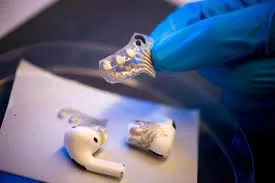A collaborative effort between research teams from South Korea’s Pohang University of Science and Technology (POSTECH), Kyung Hee University (KHU), the University of Southern California (USC), and the University of Oxford has shed light on a crucial protein associated with hearing. Published recently in the online edition of Nature Structural & Molecular Biology, their study marks a significant step forward in understanding the inner workings of a receptor protein vital for auditory and balance functions.
Located deep within the inner ear, the cochlea and vestibular apparatus play pivotal roles in sound detection and balance maintenance, respectively. Within these structures reside cells housing a particular type of receptor protein known as GPR156, belonging to the class C orphan G-protein-coupled receptor (GPCR) family. Unlike other GPCRs, GPR156 exhibits sustained activity even without external stimuli, making it integral to maintaining auditory and balance functions.
The research team, led by Professor Yunje Cho from POSTECH, collaborated with Professor Kwang Pyo Kim’s group from KHU, Professor Vsevolod Katritch’s team from USC, and Professor Carol V. Robinson from the University of Oxford to investigate the structural and functional intricacies of GPR156. Employing cutting-edge cryo-electron microscopy (cryo-EM) analysis, they delved into the molecular details of GPR156 in both its Go-free and Go-coupled states, achieving unprecedented resolution.
Their findings revealed the mechanisms by which GPR156 maintains its heightened activity, even in the absence of external triggers. The study confirmed that GPR156 activation relies on its interaction with lipids abundant in the cell membrane, leading to structural changes upon engagement with G-proteins within the cell. Particularly noteworthy was the protein’s flexibility in altering the structure of the seventh helix as it spans the cell membrane, facilitating its binding with G-proteins and subsequent signal activation crucial for sound detection.
Professor Cho expressed optimism about the implications of their research, stating, “Congenital hearing and balance impairments afflict numerous individuals. I am hopeful that our research will pave the way for groundbreaking treatments and drug discoveries to alleviate their suffering.”
The study received financial support from the National Research Foundation of Korea, underscoring the importance of collaborative international efforts in advancing scientific understanding and potential therapeutic interventions in the field of auditory research.











